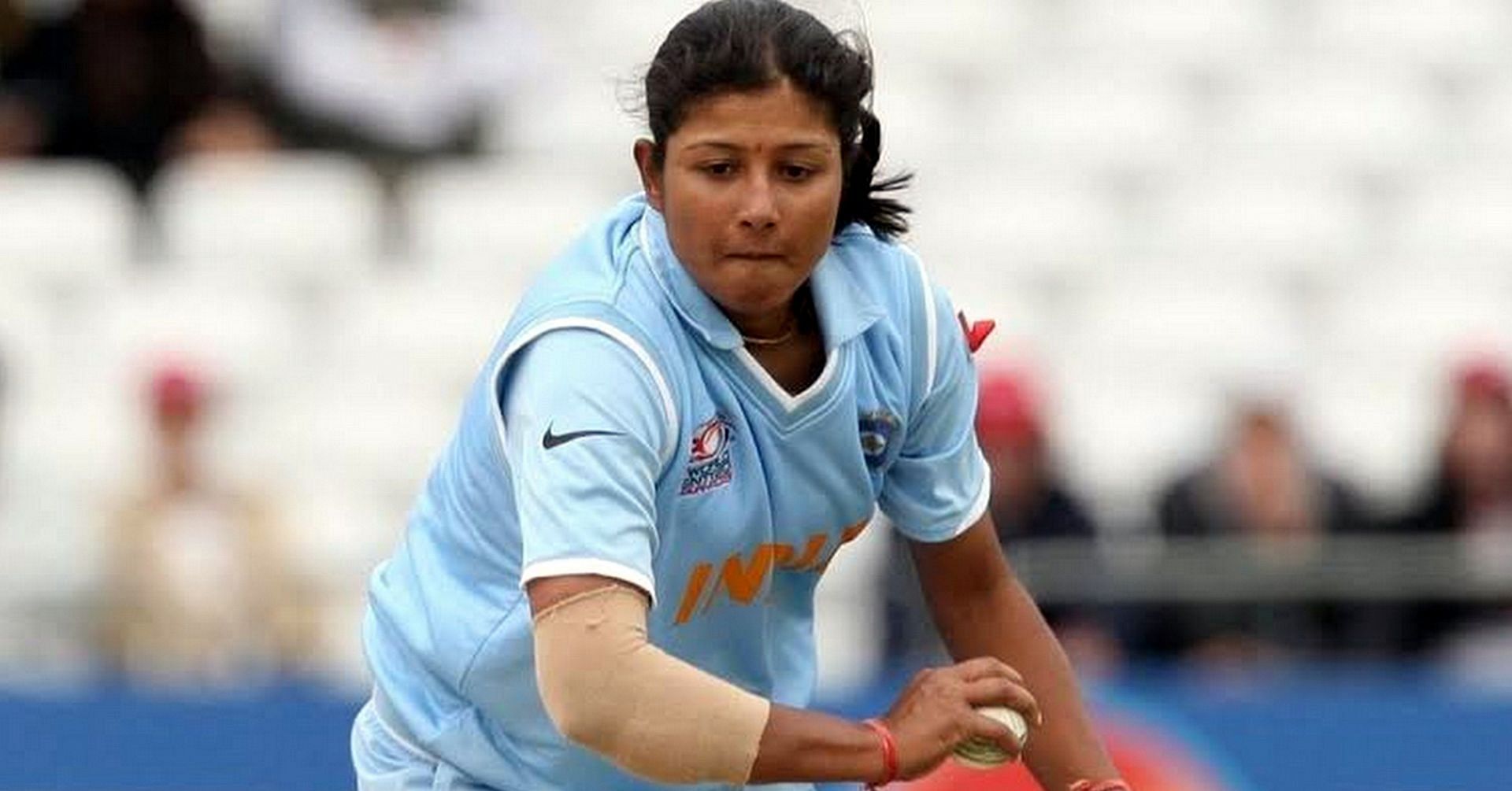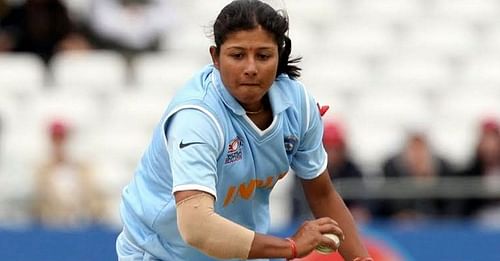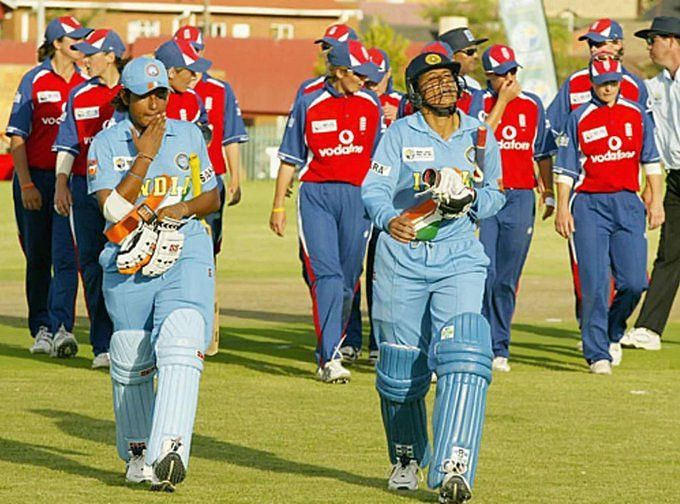
“I would love to coach a Women’s IPL team” – Rumeli Dhar

Much before the term ‘3D cricketer’ came into vogue, Rumeli Dhar exemplified versatility and set the international stage on fire with her all-round prowess.
Rumeli bowled medium pace, could open both batting and bowling, and was a gun fielder. Such ’perfect' all-rounders are rare in Indian cricket and that is why she was a huge asset to the Indian women’s team between 2003 and 2018.
For a player of her pedigree, it’s a pity that Rumeli played only 78 ODIs, 18 T20Is and four Tests over a decade-and-a-half. She frequently made an impact while donning the Indian blue, but untimely injuries severely hampered her progress at the international level.
Hailing from West Bengal’s Shyamnagar, Rumeli dabbled in multiple sports while growing up. However, it was in cricket that she found her calling.
Rumeli burst onto the international scene in 2003, making her ODI debut against England at Lincoln’s Bert Sutcliffe Oval. Interestingly, she made her Test and T20I debuts against the same opposition in 2005 and 2006, respectively.
The late 2000s saw the all-rounder’s meteoric rise as she played a pivotal role in India’s march to their maiden Women’s World Cup final in 2005 and was also the joint-highest wicket-taker for her side in the 2009 T20 World Cup with six scalps in four games.
Rumeli was at her peak around that time and formed an excellent bowling pair with Jhulan Goswami, complementing the latter’s sheer pace with her accuracy and parsimonious economy.
As fate would have it, a shoulder injury in 2012 forced her out of the national team and the next six years were all about going through the grind of domestic cricket. Riding on her strong domestic performances, Rumeli kept pushing for an Indian recall, but it seemed to elude her as the selectors decided to infuse young blood into the team.
Eventually, in 2018, Rumeli did earn a recall to the Indian team for a T20I series against South Africa in South Africa, after Jhulan was ruled out due to a heel injury. Her ‘unlikely’ return to the international fold drew comparisons with Sourav Ganguly’s epic comeback in the same country in 2006. But she ended up playing just three matches before being snubbed again. Rumeli was 34 at the time.
This time, the writing was on the wall and in 2019, she returned to Bengal after representing Air India, Railways, Rajasthan, Assam and Delhi in the years gone by. Rumeli continued churning out match-winning performances as Bengal captain and even registered her maiden career hundred and maiden hat-trick during last year’s Women’s Senior One Day Trophy.
On June 22, Rumeli brought the curtains down on her playing career and expressed her desire to become a coach. On July 14, she started her new innings as the bowling coach of Baroda’s senior women’s team and the role will help her gain some crucial experience before the inaugural Women’s IPL kicks off next year.
In a recent conversation with Sportskeeda, Rumeli, who captained India on a solitary occasion in 2008, reflected on her eventful international career and shared her views on various topics related to contemporary women’s cricket.
Here are the excerpts:
Q: You scored the maiden hundred and took the maiden hat-trick of your career during last year’s Women’s Senior One Day Trophy. Why did you announce your retirement despite being in such good form?
Rumeli: I recently completed my Level 2 coaching course at the National Cricket Academy (NCA) and felt it was the right time to start my coaching career. I thought I should give more priority to coaching as it’s my forte.
If I wanted, I could’ve stretched my career for another couple of years. But I didn’t want to do that. I wanted to retire peacefully and start my coaching career as early as possible. I think I have a lot to offer as a coach.
Q: Who was your cricket role-model while growing up?
Rumeli: I didn’t have any cricket idol as such. I used to play a lot of tennis ball cricket with my elder brother. My brother always wanted me to field as I was a good fielder. My mother was quite interested in cricket because she was a huge fan of Ravi Shastri.
Q: Did you aspire to become an all-rounder back then?
Rumeli: I had no idea what my role would be in the future (laughs). I wanted to do something big, ideally through a sport. I’ve worked very hard to achieve that goal. I loved playing all kinds of sports in my formative years, be it cricket, football, or volleyball. That’s how I drifted into cricket.
It was my uncle Tultul Chatterjee who initiated me into cricket. Later, I started training under Prodyot Mitra. During a visit to Shyamnagar, he saw me play among a hundred boys and was impressed with my performance. Earlier, sir used to come to Shyamnagar only once a week, but after seeing me, he started coming more frequently.
Q: What did you enjoy doing more in your childhood – batting or bowling?
Rumeli: I enjoyed fielding more than anything else. My uncle didn’t want me to become a wicketkeeper. He wanted me to make good use of my height and become a pace-bowling all-rounder. Initially, I was averse to the idea as I wasn’t keen to run hard (guffaws). However, once my uncle and Prodyot sir pushed me to bowl fast, I started enjoying it. That’s how I became an all-rounder.
Q: You also had an inclination towards gymnastics in your formative years. Since teams put a lot of emphasis on power and fitness in contemporary women’s cricket, how important is it for a budding female cricketer to play multiple sports?
Rumeli: First, a child should be willing to play multiple sports. If someone is focused on a specific discipline, they should be determined to be the best in that. Of course, fitness has become extremely important in contemporary women’s cricket. Irrespective of whatever sport you play, you need to work really hard on your fitness.
Q: You formed a formidable new ball partnership with Jhulan Goswami during your peak period. When did you first meet her?
Rumeli: As far as I remember, I first met Jhulan in 1998. A year later, we spent a lot of time together at the national camp ahead of the 2000 Women’s World Cup. We’ve grown up together and share a great friendship. Maybe that was reflected in our bowling partnership.
Q: You were an integral part of the Indian team that reached their maiden Women’s World Cup final in 2005. Why did we have to wait until 2017 to witness a true revolution in Indian women’s cricket?
Rumeli: We didn’t think about any change at the time as we were all busy with the World Cup. Back in the day, we just followed our passion and played the sport. Other things didn’t matter so much. Reaching our first World Cup final was a big achievement. Obviously, you want people to acknowledge and appreciate your accomplishments.
I think the 2005 World Cup paved the way for the Women’s Cricket Association of India’s merger with the BCCI. It was our mission to play under the aegis of the Board of Control for Cricket in India (BCCI) and the 2005 World Cup was a big step in that direction. A lot of girls picked up the sport after the 2005 World Cup and started believing that cricket could be a career option for them. The media, too, are doing a great job in their coverage of women’s cricket.
Q: The Indian women’s team used to play only a handful of matches in the early 2000s. How did you maintain your fitness during the long off-season?
Rumeli: During my job with Northern Railway, we used to have a camp in the evening. It was compulsory for us to report to the camp by 1.30 p.m. every day. Our coach Rajesh Nair motivated us a lot. He made sure that we were engaged in one sport or the other.
Even if we were not playing cricket, we would either play badminton or football. From my own experience, I can tell you that badminton is a sport that massively boosts your fitness and hand-eye coordination.
Q: You suffered several injury setbacks during your playing career. As a coach, what advice would you give your pupils so that they can manage injuries better?
Rumeli: Injuries are part and parcel of a sportsperson’s career. If you aspire to play at the highest level, you have to be mentally prepared to suffer injuries. I would advise budding cricketers to focus on fitness training. If you’re fit enough, you’ll have less chances of getting injured. Plan your fitness program as per your body type.
Q: Your unbeaten 66 won you the Player of the Match award in India’s first-ever women’s T20I in 2006. How did you approach the new format?
Rumeli: It was a day-night match against England in England. We approached the format as a 120-balls-a-side affair. We wanted to play as few dot balls as possible. England were more experienced in the format, having played more T20Is than us. However, we didn’t panic and were focusing on one ball at a time. That was how we managed to chase down the target (108) with four deliveries to spare.
Q: With women’s cricket becoming increasingly competitive, do you think the boards should appoint sports psychologists to look after the players’ mental well-being?
Rumeli: I think it’s very important to have sports psychologists accompany the teams because the number of matches has gone up. When you play continuously, you need counseling. There will be times in a cricketer’s career when they’ll feel extremely low. A sports psychologist can help them get through those moments.
Q: Recently, New Zealand Cricket (NZC) announced an equal pay scale for their male and female cricketers. Do you think this will encourage other boards to adopt a similar approach going forward?
Rumeli: I think it’s a great initiative. Other boards should take a leaf out of NZC’s book. Even if there isn’t an equal pay scale in all countries, I hope the pay gap gets reduced.
Q: Which uncapped players from Bengal are likely to make their international debuts soon?
Rumeli: I think Dhara Gujjar and the U-19 team’s Titas Sadhu have a good chance of earning national call-ups. Both have performed quite well of late. That said, they need to continue scoring more runs and taking more wickets. You’ll only be considered for a national call-up if you play well consistently for two to three years. That’s what Richa Ghosh did to break into the Indian team.
Q: Richa has been named as a standby for the upcoming Commonwealth Games, whereas Taniya Bhatia, who has a lower T20I strike-rate (94.31), is part of the 15-member squad. How do you view this selection?
Rumeli: The Indian think-tank is rotating the players, so everybody is getting equal chances. Richa is a good hitter, but Taniya is a better wicketkeeper. Even Sneh Rana was not part of the squad for the recently concluded Sri Lanka tour.
Sneh was dropped because she was asked to work on her fitness. Nobody questioned that decision. Likewise, Richa should work hard to improve her fitness and wicketkeeping skills.
Q: After a long time, India have found a good pace-bowling all-rounder in Pooja Vastrakar. What are your expectations from her?
Rumeli: Pooja is a true all-rounder who can make valuable contributions with both the bat and ball. She’s also a great fielder. She should be given regular chances and she should utilize those chances to cement her place in the team. I think she’s a star in the making.
Q: Can we expect to see you as a player in the inaugural Women’s IPL next year?
Rumeli: I want to devote myself to coaching from hereon. Although the option of playing in the inaugural Women’s IPL might seem tempting, I don’t want to delay my coaching ambition. I would love to coach a Women’s IPL side. Let’s see.
Rapid-fire round
Q: Your favorite pastime?
Playing gully cricket with my elder brothers.
Q: Your favorite cheat meal?
Mutton Biryani.
Q: If you could spend an entire day with an international player from another sport, who would it be?
Roger Federer.
Q: Your favorite cricket stadium?
Lord’s. I opened both batting and bowling for India at the venue (grins).
Q: If you were asked to either score 10 runs or defend eight runs off the final over of a T20 match, what would you be more comfortable doing?
Both.
Q: Define yourself in a single phrase.
Never give up.
Q: Your favorite female all-rounder at present?
Natalie Sciver.
Q: Your favorite batting and bowling performances from your own career?
Batting: The unbroken 106-run partnership with Anjum Chopra against England during the 2005 World Cup.
Bowling: My maiden hat-trick against Himachal Pradesh.
Q: If you were not a cricketer, what would you have become?
Maybe a gymnast.
